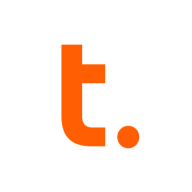

Teradata and BigQuery are leaders in the data warehousing category. Teradata is noted for its high-performance on-premises capabilities, while BigQuery shines with its cloud-native features, giving it an edge in scalability and integration with machine learning tools.
Features: Teradata is known for its ability to handle large data volumes through advanced parallel processing and robust query tuning capabilities. Its adaptability in deployment and comprehensive analytics toolset are highly valued. BigQuery is praised for its serverless architecture, scalability, and seamless integration with machine learning tools, which enhance flexibility and processing speed.
Room for Improvement: Teradata users desire better cloud compatibility, an easier user interface, improvements in handling unstructured data, and more advanced predictive analytics features. BigQuery users have pointed to high pricing, cache limitations on external tables, and UI improvements as areas needing enhancement.
Ease of Deployment and Customer Service: Teradata offers strong performance in on-premises and hybrid environments but faces challenges in scalability. Its customer service is generally well-regarded, though speedier response times are wanted. BigQuery excels in public cloud settings with easy setup, but support issues are associated with its lack of local presence.
Pricing and ROI: Teradata, while expensive, is suitable for large enterprises seeking premium analytics, offering substantial ROI through performance benefits. BigQuery presents a flexible pricing model, cost-effective for large-scale data tasks, although it can become expensive if not managed properly.
We have realized a return on investment, with a reduction of staff from 27 to eight, and our current return on investment is approximately 14%.
I have been self-taught and I have been able to handle all my problems alone.
rating the customer support at ten points out of ten
I would rate their customer service pretty good on a scale of one to 10, as they gave me access to the platform on a grant.
The customer support for Teradata has been great.
Customer support is very good, rated eight out of ten under our essential agreement.
The technical support from Teradata is quite advanced.
It is a 10 out of 10 in terms of scalability.
The scalability is definitely good because we are migrating to the cloud since the computers on the premises or the big database we need are no longer enough.
This expansion can occur without incurring downtime or taking systems offline.
Teradata's scalability is great; it's been awesome.
Scalability is complex as you need to purchase a license and coordinate with Teradata for additional disk space and CPU.
I find the stability to be almost a ten out of ten.
The workload management and software maturity provide a reliable system.
Troubleshooting requires opening each pipeline individually, which is time-consuming.
BigQuery is already integrating Gemini AI into the data extraction process directly in order to reduce costs.
In general, if I know SQL and start playing around, it will start making sense.
Unlike SQL and Oracle, which have in-built replication capabilities, we don't have similar functionality with Teradata.
If Teradata could provide a list of certified experts, that would be fantastic.
Being able to optimize the queries to data is critical. Otherwise, you could spend a fortune.
The price is perceived as expensive, rated at eight out of ten in terms of costliness.
Teradata is much more expensive than SQL, which is well-performed and cheaper.
Initially, it may seem expensive compared to similar cloud databases, however, it offers significant value in performance, stability, and overall output once in use.
We spent roughly $295,000 on setup costs.
It is really fast because it can process millions of rows in just a matter of one or two seconds.
The features I find most valuable in this solution are the ability to run and handle large data sets in a very efficient way with multiple types of data, relational as SQL data.
BigQuery processes a substantial amount of data, whether in gigabytes or terabytes, swiftly producing desired data within one or two minutes.
Teradata's security helps our organization meet compliance requirements such as GDPR and IFRS, and it is particularly essential for revenue contracting or revenue recognition.
The data mover is valuable over the last two years as it allows us to achieve data replication to our disaster recovery systems.
| Product | Market Share (%) |
|---|---|
| BigQuery | 8.0% |
| Teradata | 8.5% |
| Other | 83.5% |


| Company Size | Count |
|---|---|
| Small Business | 12 |
| Midsize Enterprise | 9 |
| Large Enterprise | 20 |
| Company Size | Count |
|---|---|
| Small Business | 26 |
| Midsize Enterprise | 12 |
| Large Enterprise | 49 |
BigQuery is an enterprise data warehouse that solves this problem by enabling super-fast SQL queries using the processing power of Google's infrastructure. ... You can control access to both the project and your data based on your business needs, such as giving others the ability to view or query your data.
Teradata is a powerful tool for handling substantial data volumes with its parallel processing architecture, supporting both cloud and on-premise environments efficiently. It offers impressive capabilities for fast query processing, data integration, and real-time reporting, making it suitable for diverse industrial applications.
Known for its robust parallel processing capabilities, Teradata effectively manages large datasets and provides adaptable deployment across cloud and on-premise setups. It enhances performance and scalability with features like advanced query tuning, workload management, and strong security. Users appreciate its ease of use and automation features which support real-time data reporting. The optimizer and intelligent partitioning help improve query speed and efficiency, while multi-temperature data management optimizes data handling.
What are the key features of Teradata?In the finance, retail, and government sectors, Teradata is employed for data warehousing, business intelligence, and analytical processing. It handles vast datasets for activities like customer behavior modeling and enterprise data integration. Supporting efficient reporting and analytics, Teradata enhances data storage and processing, whether deployed on-premise or on cloud platforms.
We monitor all Cloud Data Warehouse reviews to prevent fraudulent reviews and keep review quality high. We do not post reviews by company employees or direct competitors. We validate each review for authenticity via cross-reference with LinkedIn, and personal follow-up with the reviewer when necessary.